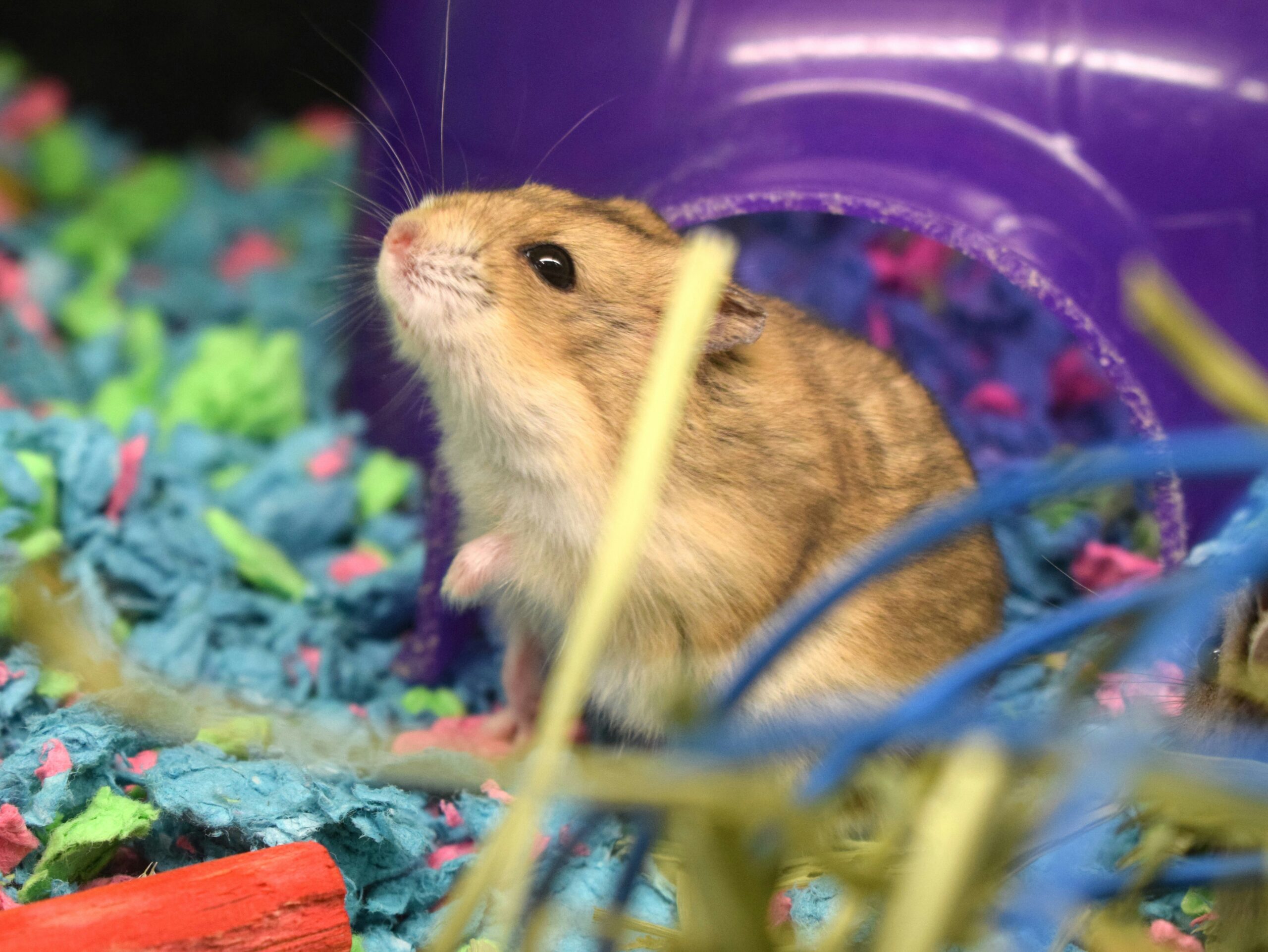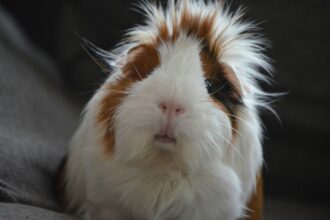Hint: Less than a guinea pig, but more than you might think.
If you’re new to gerbil ownership or even if you’ve had a few zooming around their habitat for a while you might be wondering: Do gerbils really need grooming? And if so… how often?
Spoiler alert: yes, they do! Just not in the way you might expect.
Gerbils are surprisingly tidy little creatures. They’re known for their fastidious grooming habits (seriously, they could put cats to shame), and they rarely get stinky or matted especially compared to fluffier pets like rabbits or long-haired guinea pigs.
But that doesn’t mean they’re completely off the hook when it comes to hygiene. There’s a sweet spot when it comes to caring for their coat, nails, and skin health and you’re a big part of that routine.
So, How Often Should You Groom Your Pet Gerbil?
In general, a light grooming routine once or twice a week is plenty. This can include a quick visual check, gentle handling, and a chance to roll in a fresh sand bath (more on that in a second).
But don’t worry this isn’t some spa-day-level commitment. It’s more like a few minutes of quality bonding time where you make sure everything’s looking (and smelling) good.
1. Sand Baths: The Gerbil’s Natural Grooming Ritual
Let’s clear something up right away: gerbils don’t need water baths. In fact, water can dry out their skin and mess with their natural oils.
Instead, gerbils use sand baths yes, just like chinchillas or degus. This ancient desert-native behavior helps keep their fur clean and oil-free.
Here’s what to do:
- Use dust-free bathing sand not play sand or dust. Look for products labeled for chinchillas or hamsters.
- Offer a shallow ceramic or glass dish with a layer of sand, and let your gerbil dig, roll, and do their thing.
- Leave it in for about 10–15 minutes, two to three times per week. If you leave it too long, they may use it as a bathroom (gross but true).
Note: If you’re looking into gerbil bathing needs, this is all you need to know keep it sandy, not soggy.
2. Brushing: Rare, But Not Useless
You probably won’t need to brush your gerbil very often if ever. Their short, dense fur usually takes care of itself.
But if your gerbil is older, recovering from illness, or just extra fluffy (some have surprisingly plush coats), a soft-bristled brush made for small animals can help remove excess fur, especially during seasonal shedding.
Only brush gently and no more than once a week. Gerbils aren’t fans of being over-handled, so keep sessions short and sweet.
And honestly? If your gerbil’s fur looks clean, smooth, and isn’t patchy or oily, you’re probably good to go.
3. Nail Trimming: The Rare But Necessary Task
Most gerbils naturally wear down their nails by digging, climbing, and burrowing. But in some cases especially if they’re older or have a less stimulating habitat the nails can grow too long and start to curl.
Here’s how to tell if it’s time for a trim:
- Nails are visibly long or curling inward
- Your gerbil is scratching themselves too much
- They seem uncomfortable walking
If that’s the case, use small animal nail clippers and gently snip the very tip of the nail. Watch out for the pink “quick” inside the nail cutting it will hurt and cause bleeding.
Not confident? That’s okay many vets who handle exotic pets will trim nails for a small fee.
Also, giving them access to rough stones, climbing toys, or digging boxes can help naturally wear nails down. Prevention is easier than clipping!
4. Ear and Skin Checks: Quick and Crucial
Every week or two, take a moment to do a quick check while you’re holding your gerbil (or bribing them with a sunflower seed).
Look out for:
- Flaky skin or bald spots (could point to mites or an allergic reaction)
- Redness or swelling near the ears, feet, or tail
- Scabs or scratches, especially around the nose or eyes
Gerbil skin health is often overlooked until there’s a problem. Catching things early can prevent infections and expensive vet bills later.
And while we’re at it, don’t try to clean their ears with cotton swabs. If you notice gunk or odor, talk to a vet it’s not something to DIY.
5. Teeth Check-ins: Small Mouth, Big Impact
Like other small animals, gerbil teeth never stop growing. Normally, gnawing on wood toys, cardboard, or hay chews keeps their teeth the right length.
But just in case:
- Check once a month for overgrowth
- Watch for signs like drooling, weight loss, or struggling to eat
Adding untreated wooden blocks, pumice stones, or Timothy hay-based chews can help with maintenance and boredom.
Think of it like giving them a toothbrush they actually want to use.
6. Cage Cleaning as Grooming? Absolutely.
Here’s a hot take: cleaning your hamster’s cage or your gerbil’s tank is part of their grooming routine.
Dirty bedding can lead to greasy fur, irritated skin, and even respiratory issues. You’re not just removing waste you’re preserving their overall hygiene.
Spot clean daily, and do a deeper clean with a full bedding change about once a week. If it smells funky, it’s time.
Bonus tip? Sprinkle a tiny bit of used bedding into the new batch so it still “smells like home.” Gerbils like a little continuity.
7. Bonding Through Grooming
Now here’s the soft stuff and honestly, it might be the most important.
When you take time to groom your gerbil even if it’s just offering a sand bath or doing a quick fur check you’re building trust. You’re creating routines that help your gerbil feel safe and cared for.
Sure, they might wriggle or bolt back to their tunnel the second you’re done. But deep down? They know you’re looking out for them.
8. What About Other Small Pets?
If you’re caring for more than just gerbils (you multitasking superstar), here’s a super quick cheat sheet:
- Hamsters: Similar to gerbils focus on sand baths and check for fur shedding. (See: hamster hygiene maintenance, hamster fur care, and yes, even hamster fur shedding season.)
- Guinea Pigs: Weekly brushing is a must. Long-haired breeds need more frequent trims. Keep up with nail care and ear checks. (Need more? Search: guinea pig hair care, proper guinea pig brushing, or guinea pig teeth care.)
- Rabbits: Oh, they’re high-maintenance. Regular grooming, nail trimming, and fur shedding management are key. (See: rabbit grooming for beginners, rabbit fur care, and bathing your pet rabbit just don’t do it too often.)
Each small pet has their quirks. Knowing them is part of the joy.
Final Thoughts: Keep It Simple, Keep It Consistent
Gerbils don’t ask for much but a little grooming goes a long way. With a weekly check-in, a dust bath or two, and the occasional nail or teeth inspection, you’ll help your pet stay clean, comfortable, and content.
And honestly? That small effort turns into a big deal over time. You’re not just trimming nails or swapping bedding you’re keeping your tiny buddy thriving.
So grab the sand bath, pop in a treat, and check on those whiskers. Your gerbil might not say thank you but trust me, they’re thinking it.






